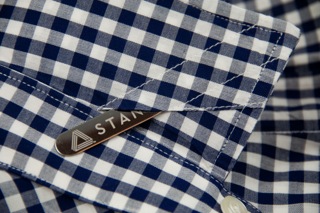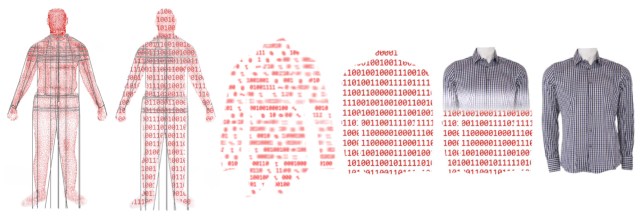Clothing brands have begun using body-scan data to tweak their clothing sizes and to help customers find the right fit. But a new Kickstarter campaign is taking this method further by creating sizes from the ground up. With 50 different sizes modeled after body scans, Stantt wants to provide a quick and cheap alternative to custom-tailored clothing.
Stantt founder Matt Hornbuckle started by scanning the bodies of more than 1,000 men ranging in age from 25 to 35. Each scan was composed of about 200 body measurements. He narrowed these down to three main measurements that would determine how well a shirt would fit: chest width, waist width and arm length. Using the data collected, Hornbuckle created each new size from digital models of various body builds.
Right now, several stores use personal body scans to find or manufacture a size. The difference with Stantt is it uses already collected data to predict potential body types. Instead of taking your own body scan, you can measure yourself at home and enter in the three numbers. Stantt also already has sizes constructed based on these measurements, so you won’t need to wait for the actual production of the shirt. To order a Stantt shirt, customers enter their measurements, and the corresponding size will ship right away.
After comparing his data to popular brands, Hornbuckle says he found that standard small, medium and large sizes only fit about 15 percent of men. But Stantt isn’t looking to take on large consumer brands.
“If you look at some of the big stores out there where a lot of guys shop, their casual shirts have 50 different styles, with six to seven sizes, and those numbers add up in a big way.” Hornbuckle tells me. “What we’re focusing on is a line of being really simple and straightforward. We’re going to focus on just the essentials.”
Hornbuckle also faces competition from startups who are making custom-tailored clothing much more accessible and affordable. For example, Trumaker sends “outfitters” to take 12 personal measurements, determine the right size and deliver a custom-made shirt. Another company, Vastrm, makes custom-fitted polo shirts, based on height, weight, body type and waist size. After trying on some sample shirts, you can tweak the fit online and then start ordering.
Both these options are able to offer more styles and customization options for cuffs, pockets, colors and more. But they also take time and effort to finesse the fit. Hornbuckle says his solution makes shopping easier for men, with measurements they can take themselves and no waiting for clothes to be custom manufactured.
Hornbuckle says he recognizes that supplying shirts in 50 different sizes to ship immediately is a lot of hassle for production. That’s why he is starting the Kickstarter off with five simple options: a standard button-down shirt for $98 in three colors and a polo shirt for $68 in two.
Stantt is planning to offer other styles and garments based on demand. You can check out their campaign here.
Stantt Kickstarter from Stantt on Vimeo.

